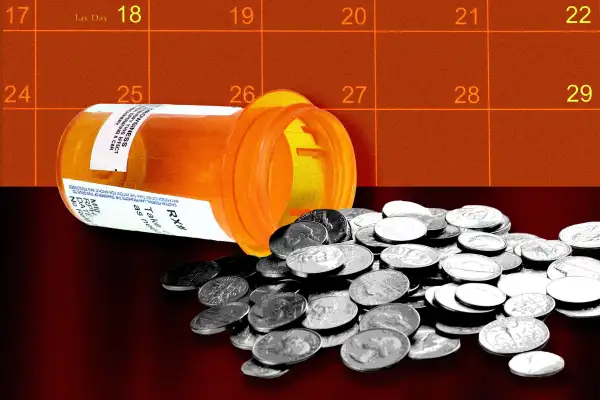You Can Put a Lot More Money Into Your HSA Next Year

Starting in January, a significant inflation adjustment will allow you to contribute much more to a health savings account (HSA).
HSAs are a type of account you can open if you have a health insurance deductible above a certain threshold — $1,600 for individuals in 2024 — and want to grow a cushion for medical expenses.
HSA owners benefit from what's called a triple tax advantage. They can make tax-deductible contributions, therefore reducing their taxable income, and withdraw the funds for eligible expenses tax-free. The earnings also grow tax-free.
HSA contribution limits for 2024
The maximum amount of money you can put in an HSA in 2024 will be $4,150 for individuals and $8,300 for families. (People 55 and older can stash away an extra $1,000.)
The 2024 caps were adjusted from this year’s limits of $3,850 for individuals and $7,750 for families.
The $300 contribution limit increase for individuals is the largest ever, and it means you can save more for medical expenses with these plans. Inflation has cooled lately, but the HSA adjustment accounts for cost-of-living increases for the 12-month period that ended on March 31.
Maxing out a HSA isn’t feasible or recommended for everyone, but some Americans use them for retirement savings.
Money you put in an account can be invested, which can make HSAs a helpful tool to prepare for medical costs you're likely to incur when you’re older. But a recent Bank of America study found that only 12% of HSA holders are investing for future growth, reflecting a lack of awareness of how the tax benefits of these accounts can make it easier to pay for medical bills.
HSAs can help you in retirement if you put money in now and invest it for years or decades. According to Bank of America, the average account balance increased from $3,931 to 4,397 in the first six months of the year. And in the second quarter of the year, 4 in 10 account holders added more money than they withdrew.
Qualified HSA expenses include deductibles, copayments and other medical charges; HSAs can also be used to pay for prescriptions, over-the-counter medications, hearing aids and menstrual products. Funds can be tapped, too, to pay for some Medicare expenses like Part B deductibles.
The limit increase will allow people who are contributing to the max to put even more money into their HSAs next year.
More from Money:
Best High-Yield Savings Accounts of 2023
Americans Aren’t Saving Enough for Retirement — and All Taxpayers Might End up Paying for It
Many Married Couples Are Missing Out on This Easy Way to Increase Retirement Savings

